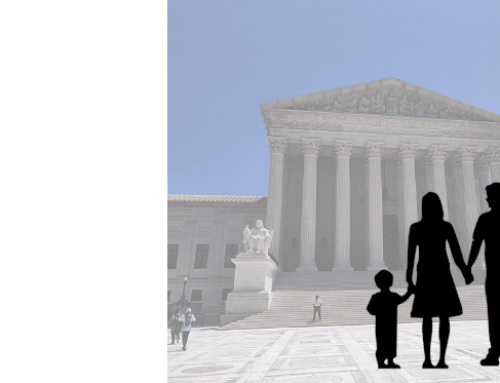Bill Donohue
This article originally appeared on the American Spectator on May 3, 2023.
On May 3, Kate Shaw, who teaches at Cardozo Law School, and Julie C. Suk, a law professor at Fordham, wrote an op-ed in the New York Times arguing that the Constitution should be amended by passing the Equal Rights Amendment. In the Senate last week, it received 51 votes, nine shy of the 60 needed for passage.
They correctly note that the E.R.A. was first introduced in 1923, but it took until 1972 before it passed in the Congress. Next up was to garner the support of two-thirds of the states. A deadline was set for ratification within seven years, and when that failed, it was extended to 1982; it failed again.
Shaw and Suk never explain what happened between 1923 and 1972. They leave us with a very different impression why the E.R.A. bounced around for decades, saying that “progress ground to a halt in the late 1970s, just three states short, after a conservative movement led by Phyllis Schlafly ignited fear of an America without patriarchy.”
This is an inaccurate account.
The reason why the E.R.A. never went anywhere for a half century is because feminists and left-wing organizations worked against it. They were not defending patriarchy—they were opposing a deeply flawed constitutional amendment.
The following is taken from my 1985 book, The Politics of the American Civil Liberties Union (Transaction Press).
In the first half of the twentieth century, no woman was more influential in defending the rights of women than Eleanor Roosevelt. But her understanding of women’s rights led her to conclude that women needed special protection from hazardous and “demeaning” occupations. Those kinds of exceptions would never pass muster with the language of the E.R.A., which is why, as Peter Drucker wrote, she was supported by liberals, socialists, and reformers “of all stripes.”
Beginning in the 1940s, the ACLU entered the fray. It rejoiced in July 1946 when the E.R.A. was defeated, sarcastically calling it the “Unequal Rights Amendment.” The person who worked the hardest to defeat the E.R.A. was Judge Dorothy Kenyon, a member of the board of directors; she chaired the ACLU’s Committee on Women’s Rights.
In the 1950s, the ACLU turned up the heat, working overtime to kill the E.R.A. Also taking its side was the League of Women’s Voters and the American Association of University Women. The ACLU maintained that the amendment “might well freeze mathematical equality into our Constitution and stand in the way of or overrule desirable differential legislation.”
The ACLU held that discrimination against women was “definitely on the way out. Only the remnants of feudalism remain.” It then explained its position with surprising candor, saying something it would never say today.
“But even in this bad area there is a little good. It is accepted social policy in most countries nowadays that it is better for mothers not to have to work outside the home but to be able to stay home with their children during a short part at least of their early infancy. For this purpose husbands must contribute support for both wife and children during the period in question. Hence the need of differential laws on this subject if true equality of opportunity and sound policy are to be achieved.”
This made good sociological sense then, and it makes good sociological sense today, though it is pure heresy among the ruling class, never mind the ACLU.
Throughout the entire 1960s, the ACLU remained steadfast in its opposition to the E.R.A. Led again by Judge Kenyon, the board of directors voted unanimously against it. On the board at that time were such radicals as Michael Harrington and William Kunstler.
It wasn’t until 1970 that the ACLU pivoted and became an advocate of the E.R.A. Once Kenyon made the about-face, the others fell in line.
Women, however, still didn’t want the amendment, and this included liberal women. In 1975, the E.R.A. was on the ballot in New York and New Jersey, and it was decisively defeated in both states. As Linda Greenhouse of the New York Times observed, it was women, not men, who were responsible for the defeat. They said no to the male-dominated Congress that overwhelmingly passed the E.R.A. in 1972.
According to Shaw and Suk, “The E.R.A. would protect the fundamental rights necessary to women to live as equal citizens in America.” It’s hard to take them seriously.
The Democrats recently voted unanimously against women’s rights. Their vote against the “Protection of Women and Girls in Sports Act of 2023” was driven by their insistence that biological males should be able to compete in women’s sports, effectively destroying the athletic rights of girls and women. Women’s privacy rights obviously mean very little to the Left, given their conviction that men have the right to share the locker rooms and showers with women.
How ironic it is to note that for a half century, it was feminists and left-wing activists who supported women’s rights by fighting the E.R.A., and now we have the specter of those same people working to destroy the rights of women in the name of promoting them.







